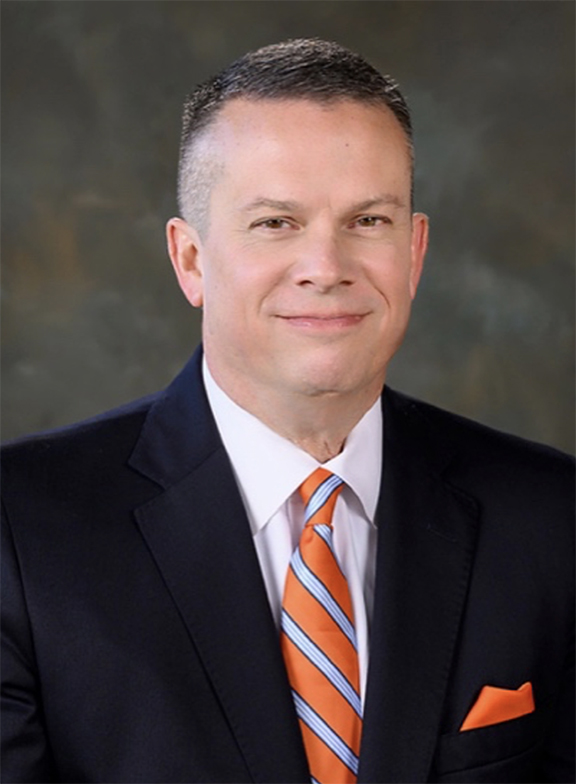Launching a new strategic plan for Campbell University
President’s Blog | Campbell Forward
Overarching Principles and Plan of Action
Campbell University is overdue for a five-year plan of action, and I am writing today to announce the launch of a process that will lead to Campbell University 2026-2031: A Strategic Plan for Renewal, Growth, and Recognition.

Our new strategic plan will clearly and succinctly map out a set of institutional priorities that will guide us into a bright future. It will reaffirm our core commitments, sharpen our institutional identity, pinpoint a set of unexploited opportunities, and help direct resources in ways that will maximize impact. Experience teaches that good planning requires constructive, forward-thinking input from all stakeholders — faculty, staff, students, alumni, trustees, and community partners. Good planning demands that we resist the “kitchen sink” approach to forging our way forward; indeed, the best institutional plans are not those into which everyone tosses all their pet projects, large and small. The best plans are those that focus on a limited number of ambitious but achievable objectives that will facilitate forward progress. The best plans are bold, distinctive, and authentic.
On Sept. 8, the University Strategic Planning Committee held its first meeting. As President, I am chairing the committee, which includes Dr. Michael Adams (Provost), Sandy Connolly (Vice President for Business and CFO), Sherri Yerk-Zwickl (Vice President for Information Technology and CIO), Vincent Benbenek (Chief Marketing Officer), Rev. Louisa Ward (Dean for Spiritual Life and Campus Minister), Dr. Michael Larsen (Associate Professor of Biology and Chair of Faculty Senate), Tara Wilson (’89, Chair of Presidential Board of Advisors), Maren Hess (Associate Provost for Institutional Effectiveness), Trent Elmore (Director of Human Resources), Cutler Bryant (Undergraduate Representative, Student Body President), and Anna Fish (Graduate Representative, Doctor of Physical Therapy Class of ’26 Student Body President).
The University Strategic Planning Committee’s first action has been to produce a feedback survey that, starting today, has been sent via email to current Campbell students, faculty, staff, alumni, and trustees. I am inviting and encouraging each of you to take the time (~15 minutes) to complete the questionnaire and to return it by the date indicated in the email. The answers you provide will generate an important foundation for the Committee as it seeks to establish commitments, objectives, and measurable targets.
The Committee then plans to host three town hall meetings in the coming months, allowing constituents and stakeholders to share ideas in a community setting. The town hall meetings will have a videoconference option for those unable to attend in person.
Our hope is to begin drafting the University Strategic Plan upon completing our listening sessions and data-gathering efforts. A good university strategic plan should probably be no more than five pages in length, and it should set out to focus on three to five big commitments. Within each of those commitments, there will be a limited number of specific objectives to pursue. Each objective must be measurable, and a strong plan will be one that clearly articulates the metrics to be used in charting our institutional progress.
A good university strategic plan is one that distinguishes itself from other forms of planning, especially those associated with a master plan or a capital campaign. CU 2026-31 could, for example, focus on the quality and currency of our academic offerings, on initiatives to facilitate enrollment growth and student retention, on efforts to impact our community and region, or on new ways to live out our Ad astra per aspera motto. What signature degree programs do we want to have in place by the end of the planning period? Into which high-impact learning practices do we wish to invest? How do we best leverage our location? These are among the kind of questions that can animate our conversations in the coming months. We will save a range of other dreams (e.g., housing upgrades, new athletic facilities, academic infrastructure) for our next Master Plan as well as our next comprehensive fundraising campaign…which, too, are on the near horizon.
Once written, vetted, revised where necessary, and then presented to the Board of Trustees, we should have a working University Strategic Plan in place that enables us to transform vision into action.
Unit-Level Planning. An important second phase of the strategic planning process will charge 14 separate administrative divisions with writing their own five-year plans that complement the key components of Campbell University 2026-31. The 14 local planning units include:
- College of Arts and Sciences
- College of Pharmacy & Health Sciences
- Wiggins School of Law
- Lundy-Fetterman School of Business
- School of Engineering
- School of Education and Human Sciences
- Wallace School of Osteopathic Medicine
- School of Divinity
- Adult and Online Education
- Athletics
- Enrollment Management
- Institutional Advancement
- Student Life and Christian Mission
- Wiggins Memorial Library
These local planning units will form their own committees and, following guidance from the University Strategic Planning Committee, draft their Plans (no more than five pages) during the Spring 2026 semester.
Campbell University has been at its best over the years when it has dared to dream … and then set out to deliver on those dreams. This strategic planning process invites us all to dream again … I cannot wait to see what we can build together!
